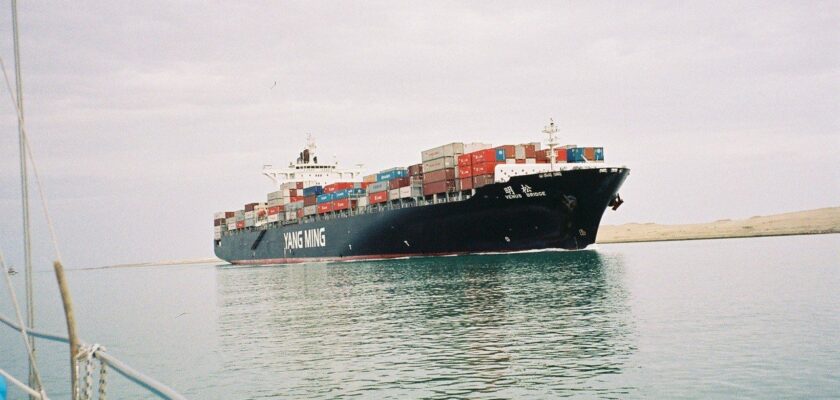Suez Canal
Suez Canal is a man-made shipping canal in Egypt, connecting the Mediterranean Sea and the Red Sea. The canal is 160 kilometers long, up to 350 m wide, and 20 m deep.
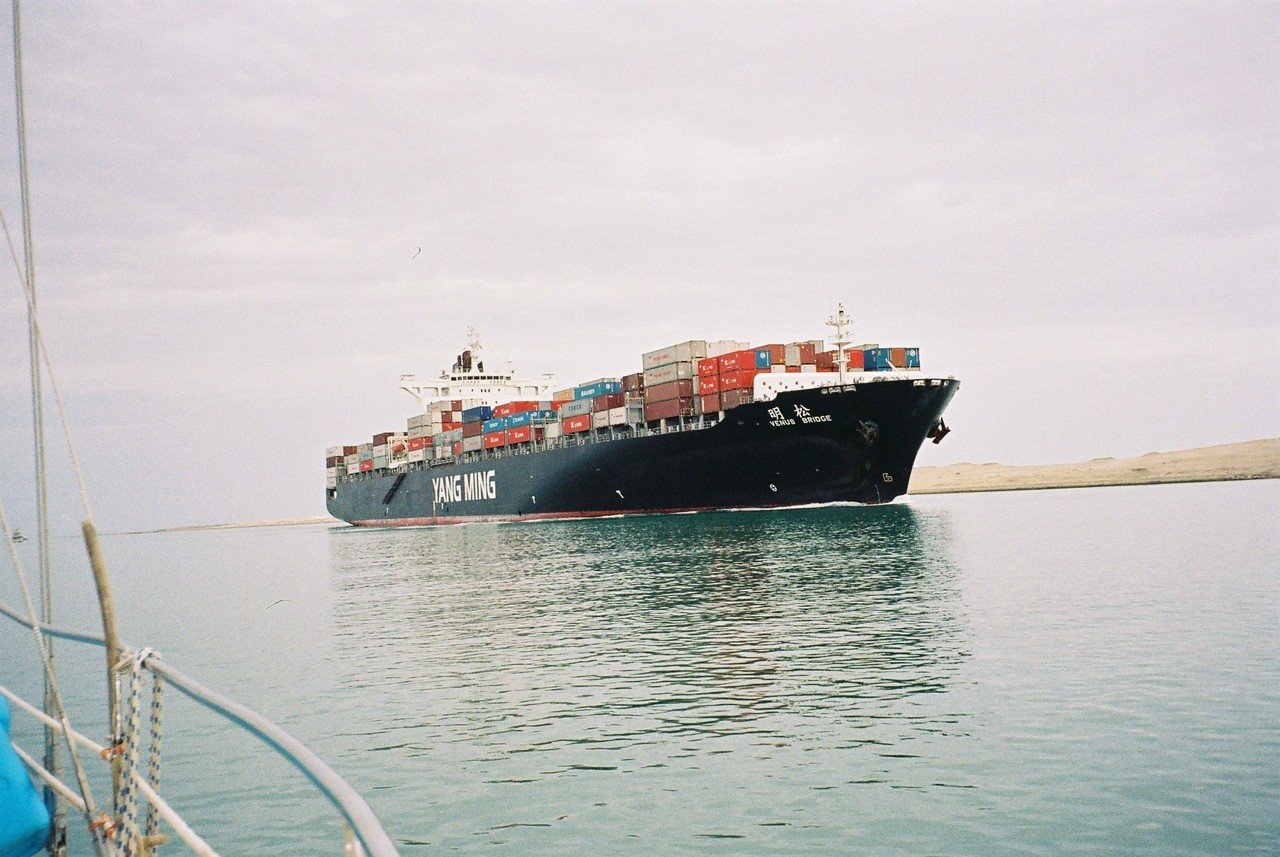
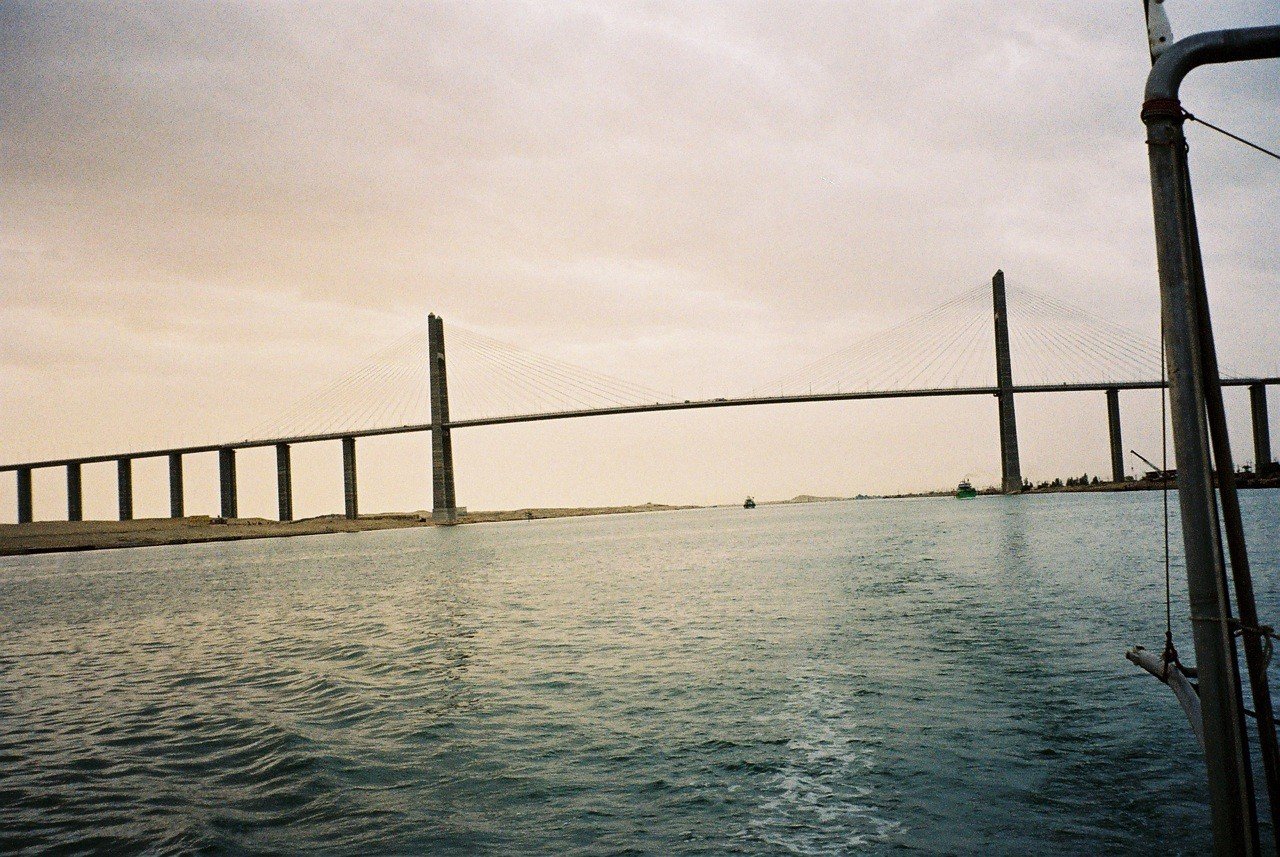
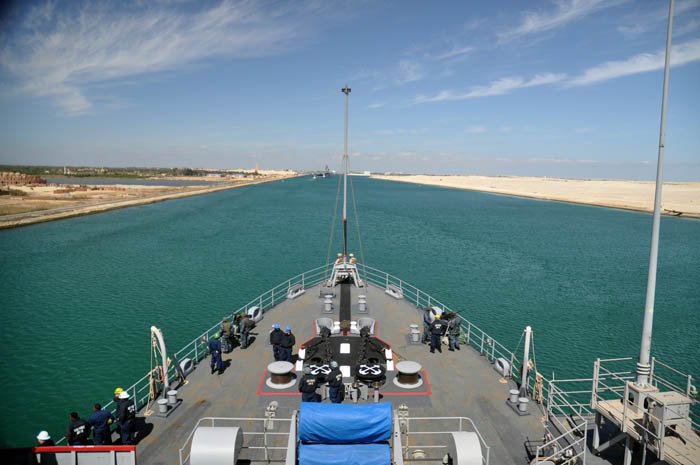
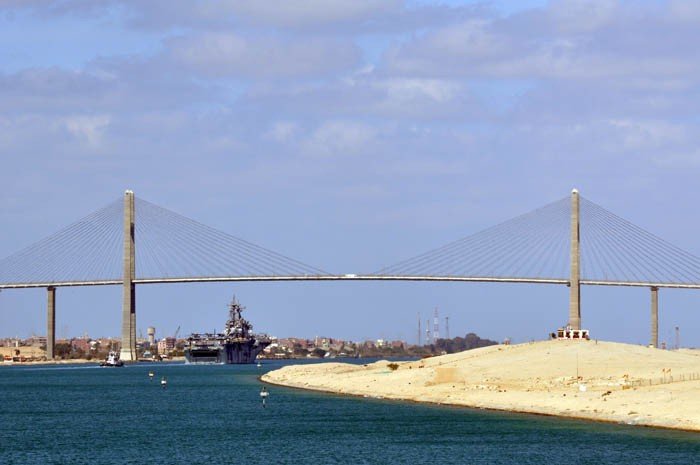
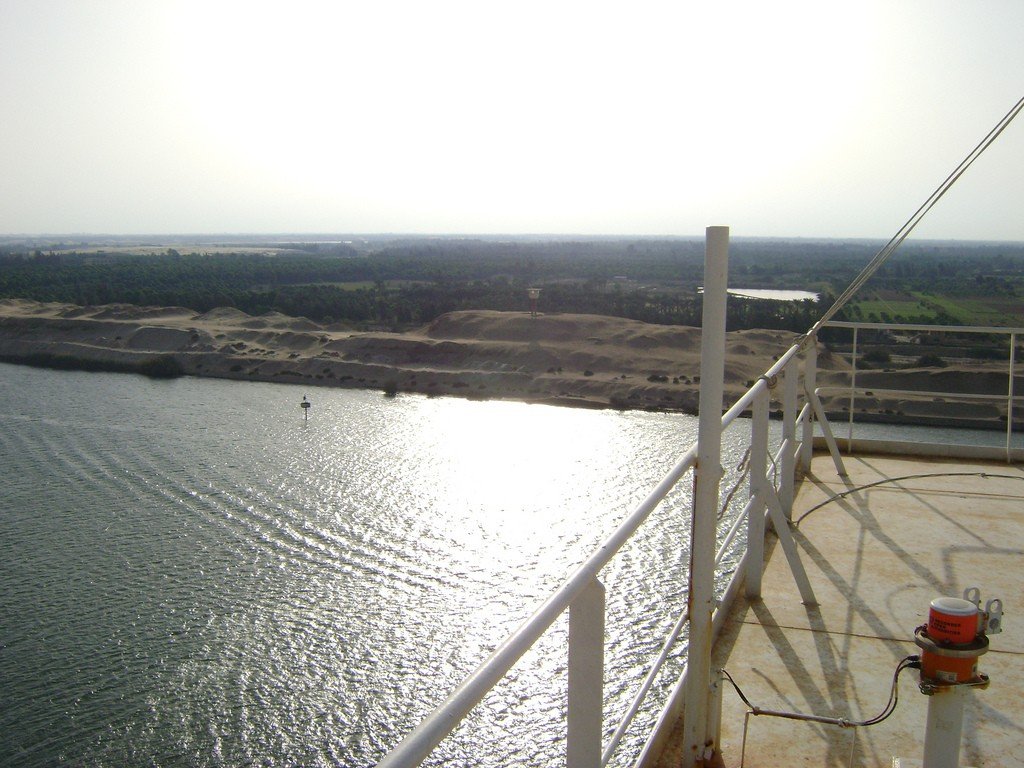
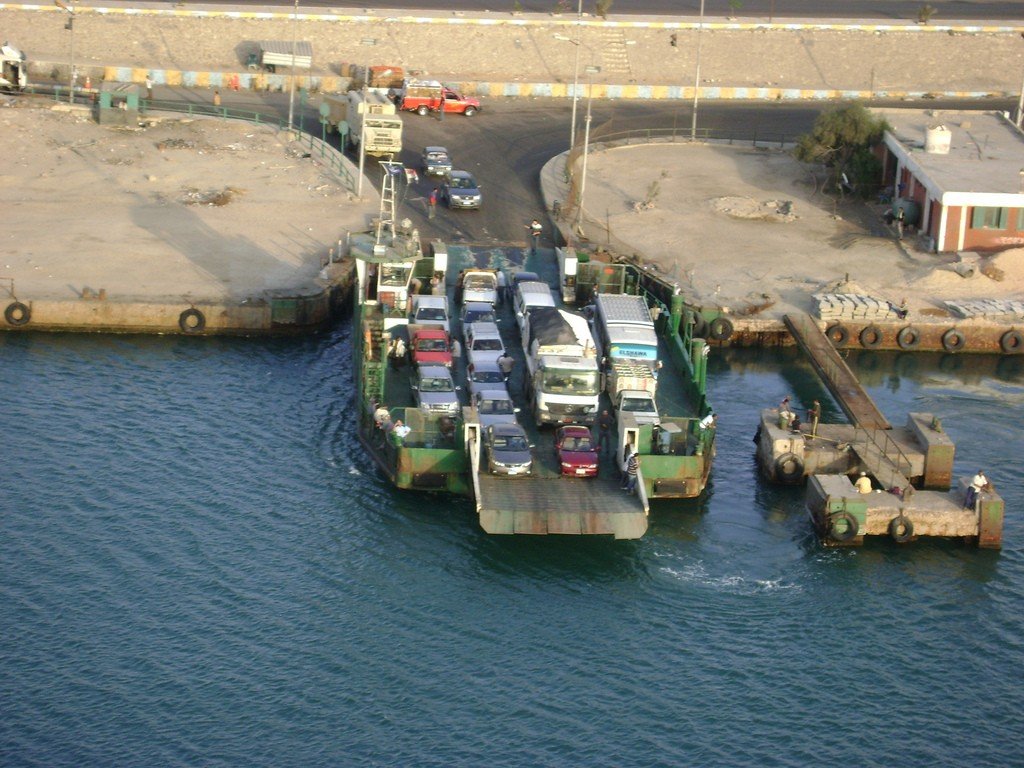
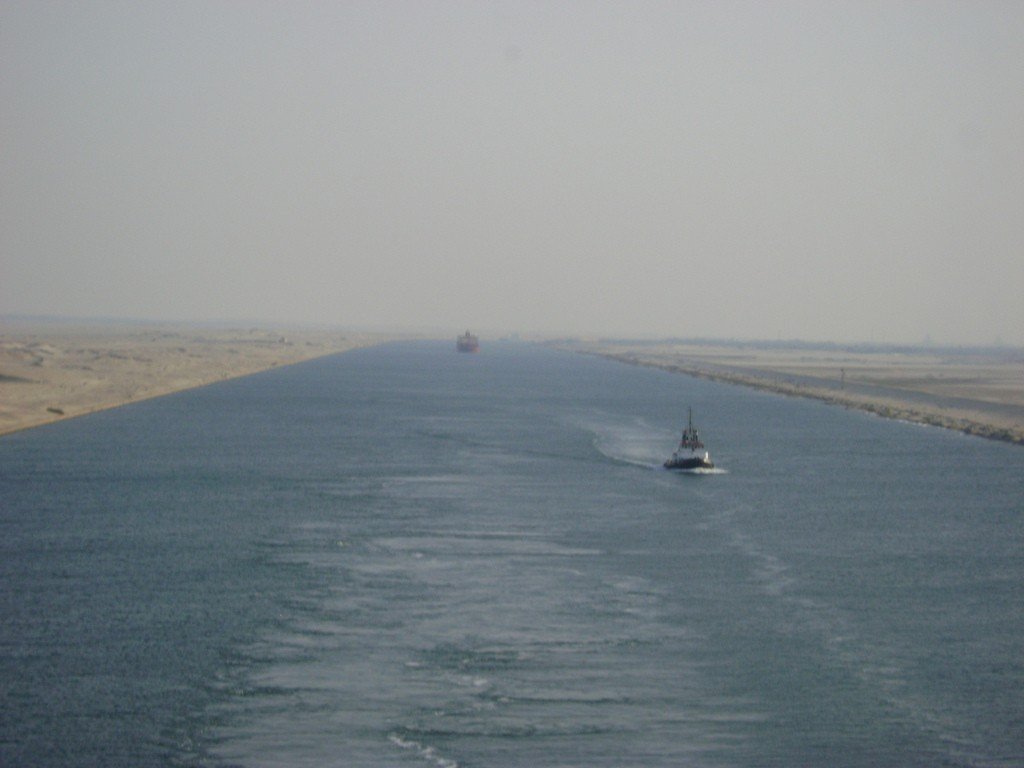
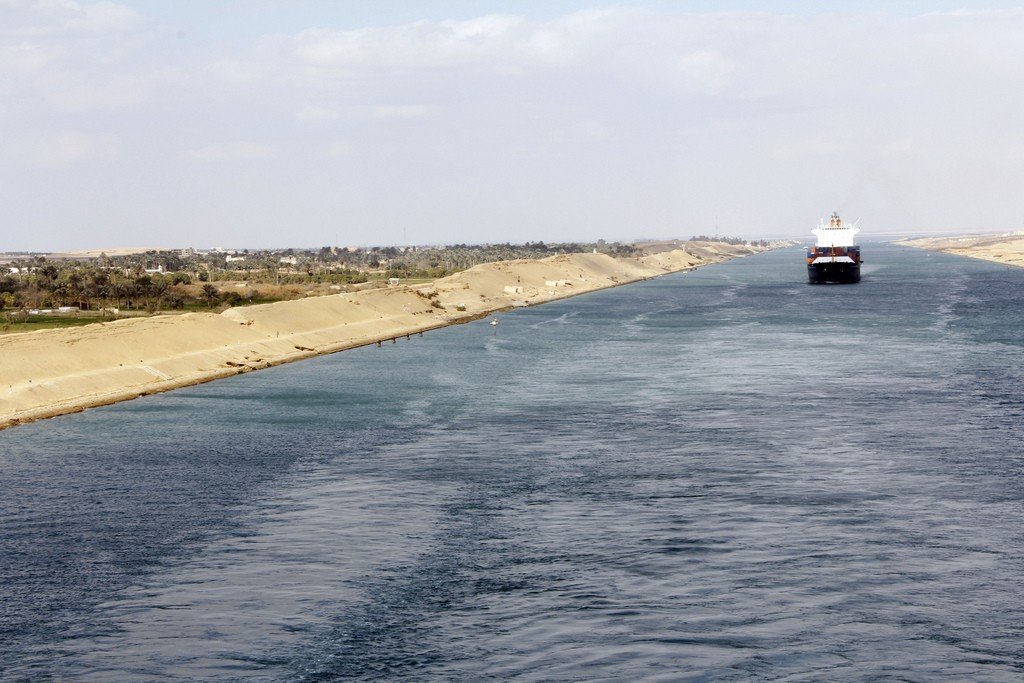
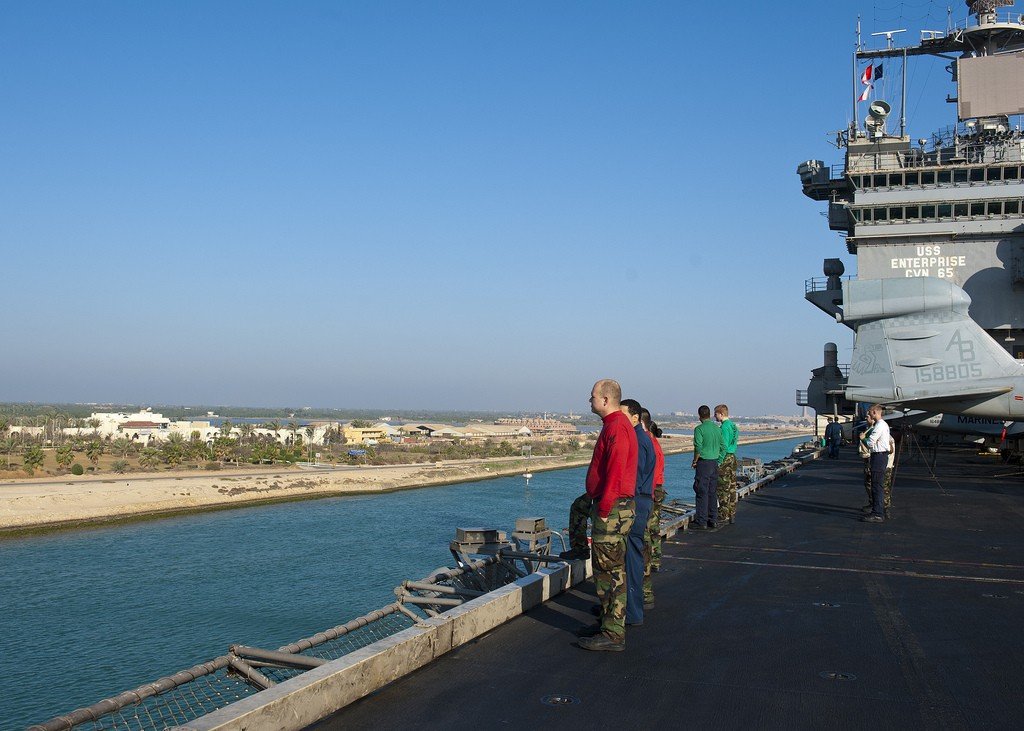
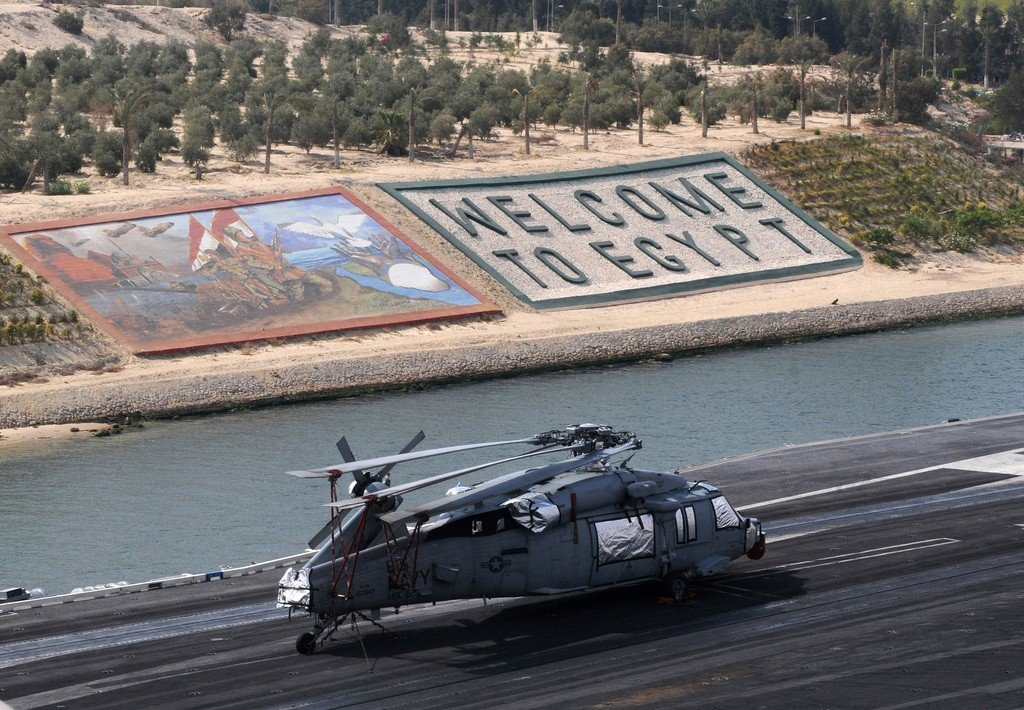
Background
The idea of building a canal between the Red Sea and the Mediterranean Sea dates back to antiquity. In the 7th century BC, Necho II, pharaoh of the XXVI dynasty, put forward a project to connect the Gulf of Suez with the Nile, and therefore with the Mediterranean Sea, but he was dissuaded from doing so. In 521 BC, the Persian conquerors of Egypt under Darius began construction of a canal between Ismailia and Cairo. Despite the resumption of work by the Romans c. 100 CE, no trace of this canal survived already under the Caliphs 700 years later.
.
In the 19th century, an ambitious plan to build a canal across the narrow Isthmus of Suez belonged to the French engineer Ferdinand de Lesseps, who eventually convinced Said Pasha of the profitability of the project. With the support of European countries, the great project started in 1859. It took 10 years and 25,000 workers to dig a 160-km canal from Suez to Port Said. Opened in 1869 and nationalized in 1956, the canal was blocked by Egypt during the 1967 Arab-Israeli war and only reopened in 1975 under President Sadat.
.